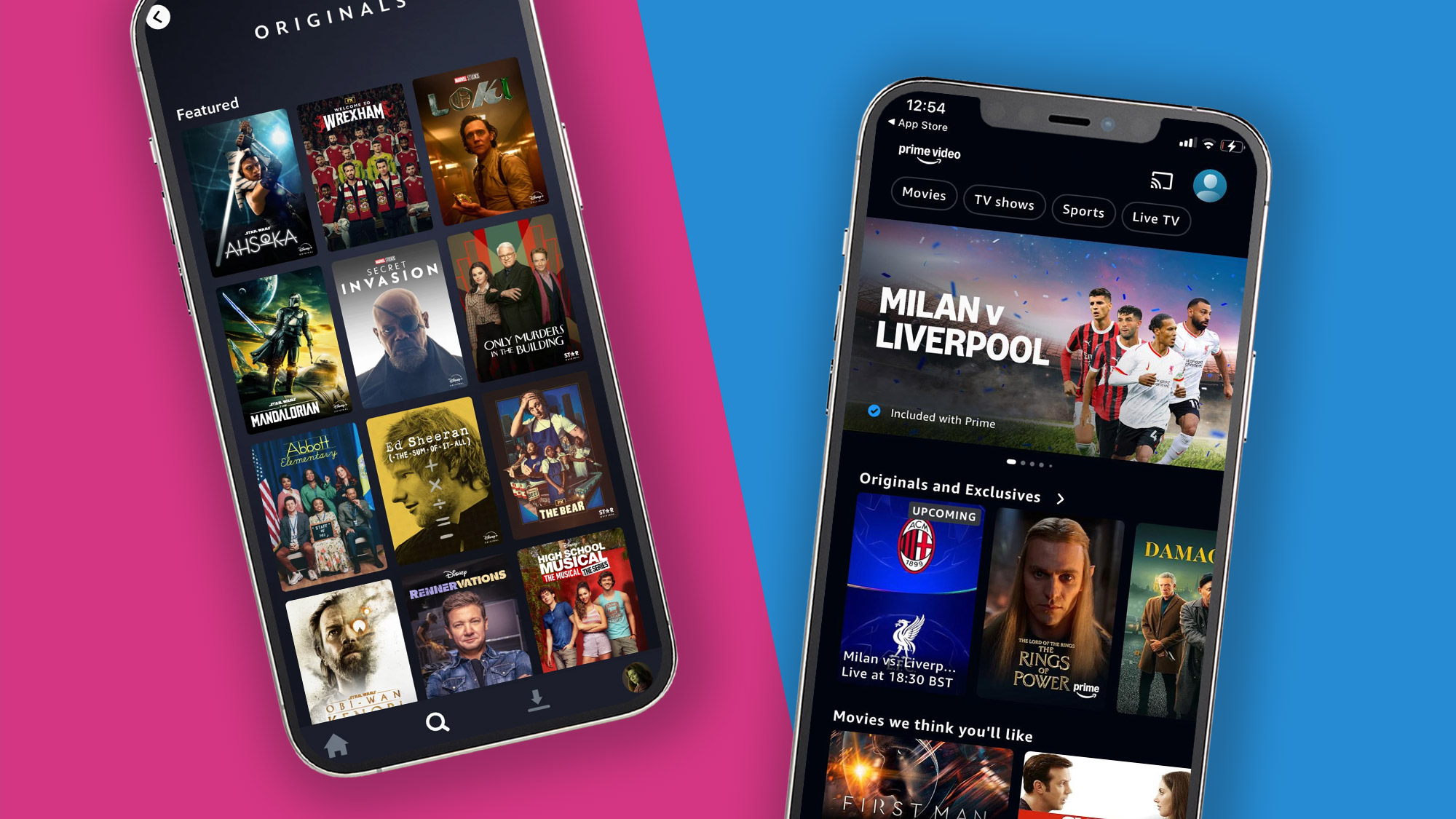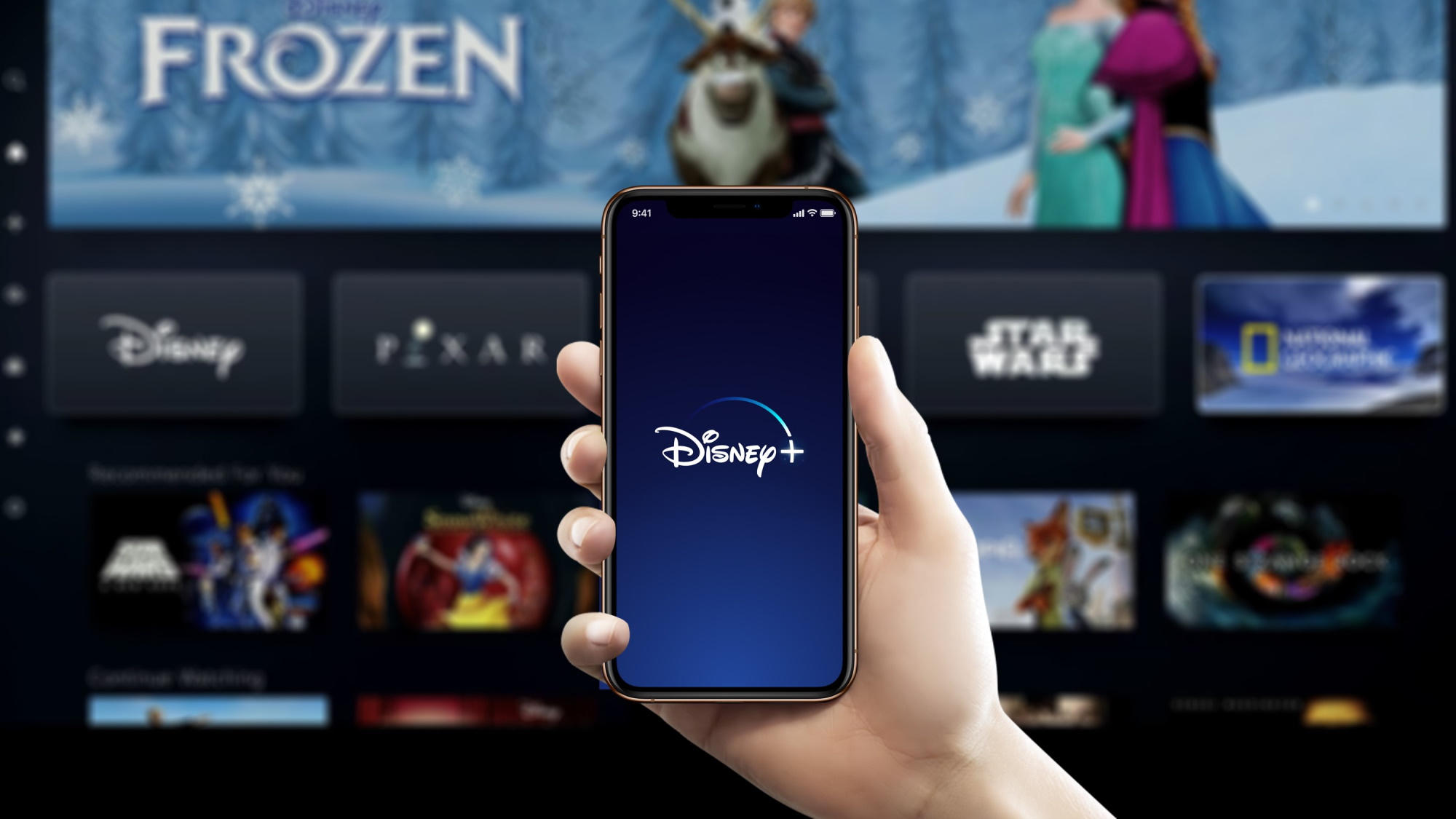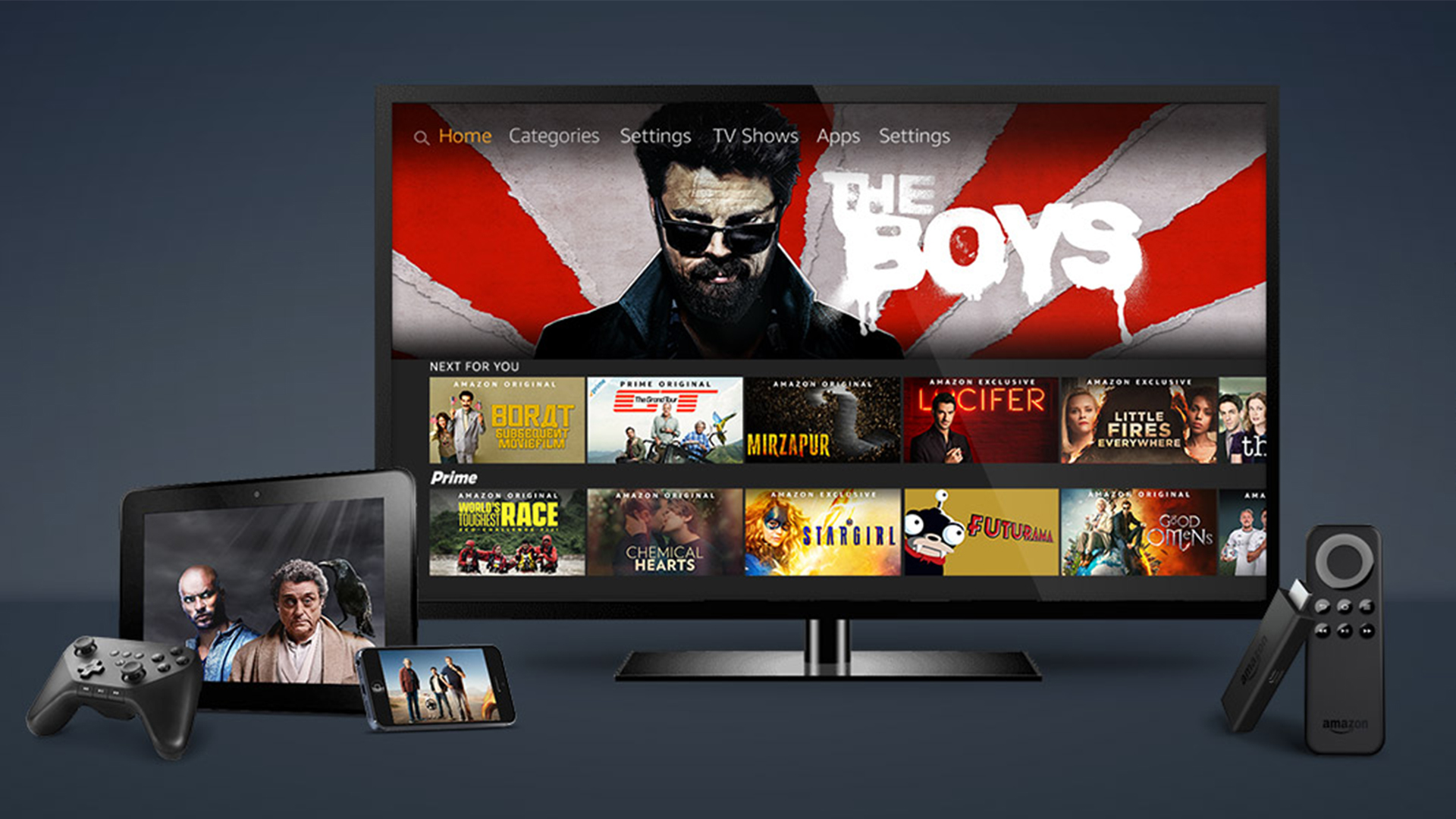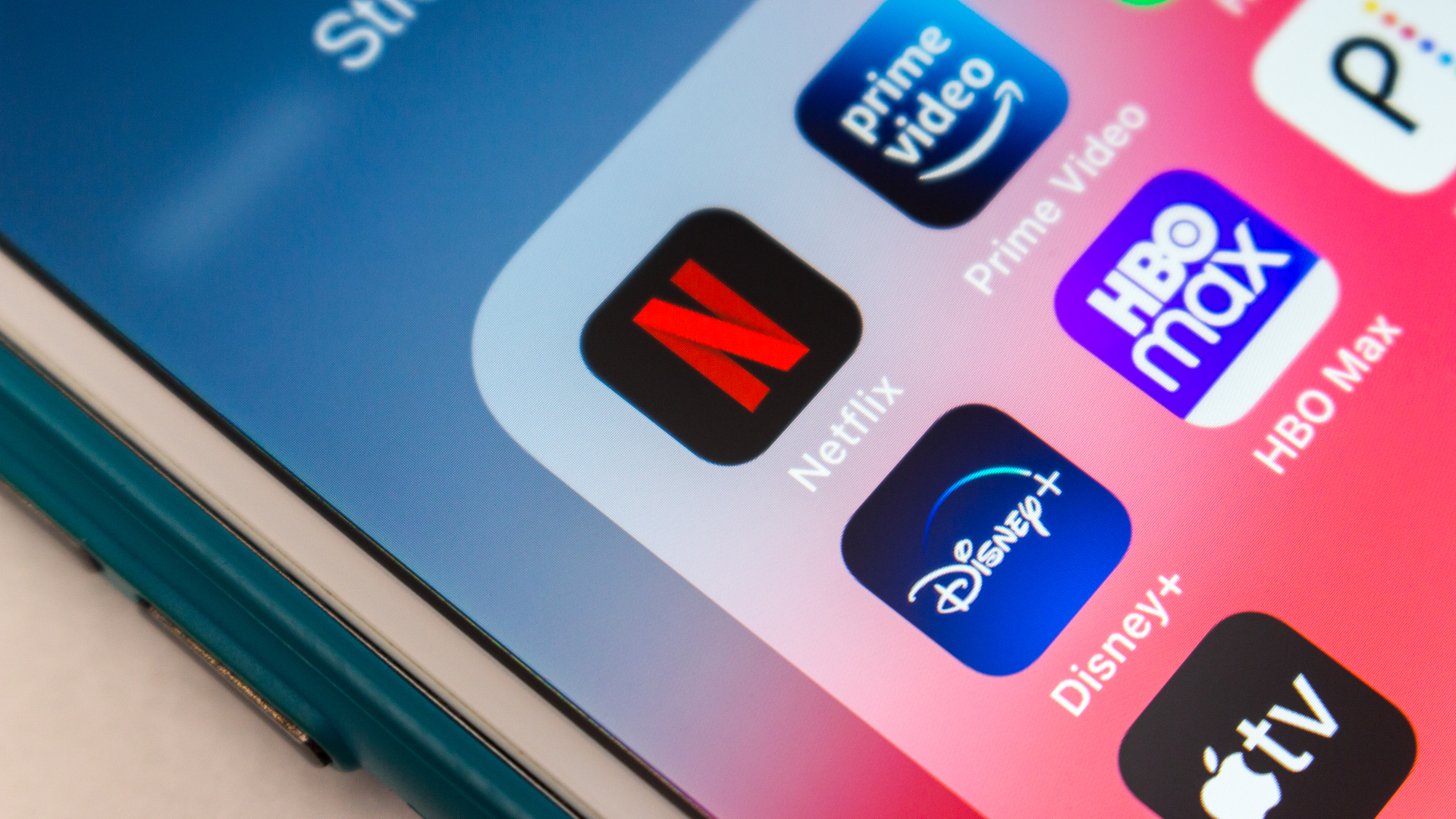Disney Plus vs Prime Video: which streaming service should you choose?
Two streaming giants go head to head

Of all the best streaming services, Disney and Amazon own two of the very biggest and are among the richest parents: Disney owns some of the world's favorite movie franchises and lots of studios too, and when Jeff Bezos isn't buying space rockets his firm is investing heavily in expanding Prime Video's already massive catalog.
We’ve collected together everything you need to know about Disney Plus and Prime Video to help you decide which one is right for you – considering what each service offers, how they cost and, most importantly, the content they have to offer.
Before you decide, remember that finding the right streaming service for you will be personal, and depend on which TV shows you can’t live without, your budget and whether you can afford to add another subscription alongside your current streaming plans.
Disney Plus vs Prime Video: Price and plans

Prime Video is available in two ways. You can buy it as a stand-alone subscription starting at $8.99 / £5.99 / AU$9.99 per month, or you can get it for free as part of an Amazon Prime membership, which gives you extra goodies such as faster delivery, streaming music and other perks.
A Prime membership is currently $14.99 / £8.99 / AU$9.99 per month. The Student membership option is $7.49 per month in the US and £4.49 per month in the UK, but that option is not available in Australia.
Prime Video introduced a higher fee for streaming without ads in January 2024. For a stand-alone subscription it currently costs $11.98 / £8.98 / AU$12.98 per month for its ad-free option. Adding ad-free video to an existing Prime subscription is an extra $2.99 / £2.99 / AU$2.99 per month.
If you can spare the cash, the best way to buy Disney Plus or Prime Video is to pay for a year up-front. That brings the price down considerably.
Sign up for breaking news, reviews, opinion, top tech deals, and more.
Disney Plus's annual plans give you twelve months for the price of ten on its ad-free plans. Taking out a full Amazon Prime membership in the US gives you an even bigger discount, taking the annual cost down from $179.99 to just $139 – although you'll still need to pay more if you want to remove the ads. In the UK the discount isn't quite so impressive: a year of Prime is £95, an annual saving of £12.88.
The most recent Disney Plus price rise came on October 17, 2024. That increased the ad-supported plan from $7.99 per month to $9.99 per month in the US, and the ad-free plan went up from $13.99 per month to $15.99. UK prices also went up, from £7.99 per month to £8.99 for Standard (without ads) and from £10.99 to £12.99 for Premium. Australia got more expensive too, but in a different way: a more expensive tier was added in March 2024 at AU$17.99 per month for customers who wanted 4K and Dolby Atmos.
At the moment, the cheapest Disney Plus plans are:
- US: from $9.99 a month with ads
- UK: from £4.99 a month with ads
- Europe: from €5.99 a month with ads
- Canada: from CA$8.99 a month with ads
- Australia: from AU$13.99 a month with ads
- New Zealand: from NZ$14.99 a month with ads
Disney Plus has a similar account sharing limitation to Netflix: if you want to share your account with someone who doesn't live under the same roof you'll need to pay for an extra member account.
In the US, that means there are effectively two and a bit Disney Plus tiers: Basic, Premium, and the Extra Member option for both of those tiers.
In other countries there may be an extra tier. For example in the UK, Disney Plus Basic becomes Disney Plus Standard With Ads at £4.99 per month; the Premium tier is there too but there's an in-between option, Disney+ Standard, which is ad-free but lacks the 4K and HDR of the Premium tier. That's currently £8.99 per month and Premium is £12.99. Disney Plus is also available as bundles in the US with services such as Hulu and ESPN.

Disney Plus vs Prime Video: What can you watch?
For details of what's worth watching on Disney Plus right now, check out our guides to the best Disney Plus movies and the best Disney Plus shows.
The big streamers don't give exact numbers for the size of their catalogs. But third party firms such as Reelgood try to track the differences, and as of late 2023 Amazon's Prime Video had a much larger library of movies than any other streamer. In fact, it had many more movies than Hulu and Disney Plus combined.
Prime Video also offers excellent add-ons such as the free ad-supported TV service service Freevee, which is one of the best free streaming services, and it also offers live sports streaming including Major League Baseball and Thursday Night Football.
Disney's catalog is smaller, but it has some very big names: Pixar, Star Wars, Marvel and the MCU and more. It's also slowly merging Hulu and Disney Plus's catalogs.

Check out our guides to the best Prime Video shows, the best Prime Video movies and the best new Prime Video movies.
Although it doesn't commission nearly as many shows as some other streamers, when Prime Video spends it spends big. This year we've seen several big hitters including The Boys season 4, The Lord of the Rings: Rings of Power season 2 and Fallout.
Amazon owns MGM Studios, which means it's particularly good for Hollywood movies, and its ad-supported Freevee has a good selection of classic TV as well as a few originals such as one of our favorite shows, Bosch Legacy.

Both streaming services are constantly adding new content, but they do it in different ways: Prime Video adds almost all of its new content on the first of every month while Disney Plus tends to update its catalog more frequently. Most of the Disney Plus additions are new episodes of existing shows.
How often do Disney Plus and Prime Video refresh content?
Disney Plus
- 5 movies and 9 new shows (including multiple holiday specials) added to its US catalog in December 2024
- 4 movies and 2 new shows added to its US catalog in November 2024
- 6 movies and 3 new shows added to its US catalog in October 2024
Disney Plus vs Prime Video: Features
| Basic: | Ad-supported. Up to 4K UHD & HDR4 streams. No offline downloads. Stream on multiple devices at a time. |
| Premium: | Ad free. Up to 4K UHD & HDR4 streams. Dolby Atmos audio. Offline downloads. Stream on multiple devices at a time. |
| Extra member: | Access the same content and features as the account holder. Stream on one device at a time. Create and access only one profile. |
One of the biggest differences between the two services is that Disney Plus's home page focuses on shows and movies that are already included in your subscription. Prime Video is more confusing, because it also crams in paid rental and purchase options and extra subscription channels too. Some of those channels are free, so for example the Amazon owned Freevee is ad-supported. Others tend to be paid-for with a short free trial period.
Disney Plus's quality options are quite straightforward: it's 1080p HD unless you pay more for Premium, which delivers 4K and HDR. Prime Video is more complex because the quality depends not on the subscription you have but the device you're streaming to, so for example the app delivers up to 4K and Dolby Atmos on Android, on Fire TV tablets and on Fire TV sticks, but it's HD and stereo on iOS and Windows.
Both services enable you to create and use multiple profiles for different family members, but Disney Plus restricts account sharing and Prime Video doesn't. That means if the kids are off to college (or if they have more than one home, for example because they spend half their time with each parent) they can still access their Prime Video accounts. With Disney Plus you'll need to buy an Extra Member subscription for anyone who isn't viewing under the same roof as you.
| Standard with Ads: | Ads, 3 simultaneous streams, UHD 4K, HDR10 and HDR10+ resolution on select titles and download to 4 devices. |
| Ad free: | Limited ads (some titles will have skippable trailers), 3 simultaneous streams, UHD 4K, HDR10 and HDR10+, Dolby Vision, Dolby Atmos and download to 4 devices. |
| Amazon Household: | Ads (unless each Amazon account signs up for ad free), 3 simultaneous streams, UHD 4K, HDR10 and HDR10+ resolution on select titles, download to 4 devices, and option to add 2 adults and 4 children in the household to receive select Prime benefits. |
Disney Plus vs Prime Video: Design

The design of streaming services is well established now, to the point where it's sometimes hard to tell which service you're using. As we've previously mentioned, the big difference between Disney Plus and Prime Video is that the latter's home screen is quite keen to sell you additional things.
There's another key difference, which is that Disney Plus has a row of studio icons at the top of its home page: that makes it easy to jump to Disney content, or Pixar, or Marvel, or Star Wars, or National Geographic.
Amazon is getting very interested in AI, and it has added AI-powered recommendations to its own service. It also has a handy feature called X-Ray Recaps that's currently rolling out to some users: it'll help you pick up where you left off by giving you a summary of what you've seen so far.
One area in which we think Prime Video falls down is in its advertising, which is often repetitive and doesn't wait for appropriate breaks in the show or movie. Prime Video's ads haven't yet reached YouTube levels of awfulness, but they're still an irritant.

Disney Plus vs Prime Video: Verdict

If you're looking for the very latest Star Wars spin-offs or Pixar movies then clearly Disney Plus is the streamer for you; if you want a much wider selection, then Prime Video is the better bet. However, both services can be expanded (for extra cash) to offer even more viewing: Disney Plus via its bundles with services such as Hulu and ESPN, and Prime Video with additional channels.
Prime Video is better value for money, especially as part of a Prime subscription: you get it automatically (albeit with ads) when you pay for Amazon's faster delivery service. But even as a stand-alone service it's considerably cheaper: its ad-free 4K option is cheaper than Disney Plus Premium.
Ready to switch streaming services? Here's how to sign up to Disney Plus. Alternatively, check if the Amazon Prime Video free trial is still available or how to cancel your Amazon Prime membership.
You might also like
- How to watch Prime Video with all your friends
- Prime Video movie of the day: Die Hard is a Christmas movie, oh yes it is
- Prime Video's subscriptions are currently much cheaper

Contributor
Writer, broadcaster, musician and kitchen gadget obsessive Carrie Marshall has been writing about tech since 1998, contributing sage advice and odd opinions to all kinds of magazines and websites as well as writing more than twenty books. Her latest, a love letter to music titled Small Town Joy, is on sale now. She is the singer in spectacularly obscure Glaswegian rock band Unquiet Mind.